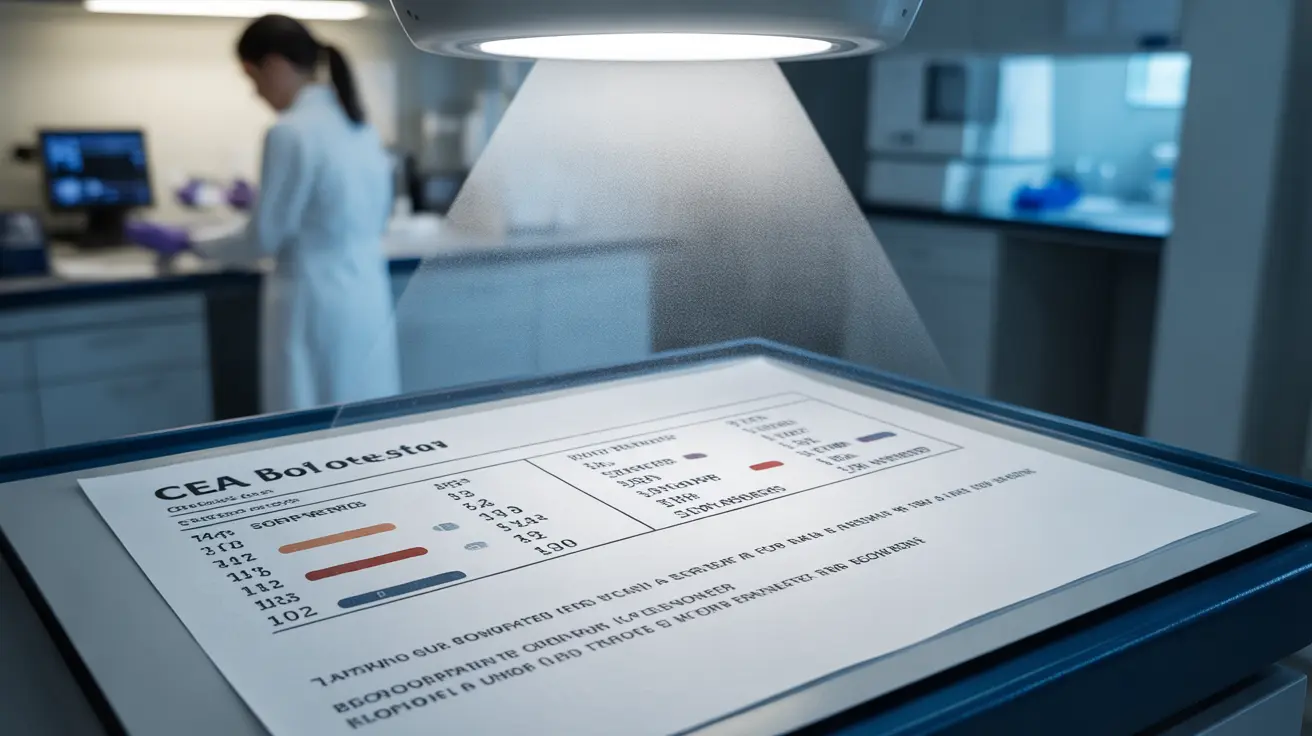Carcinoembryonic antigen (CEA) blood tests serve as an important tool in cancer detection and monitoring. Understanding what level of CEA indicates cancer can help both healthcare providers and patients better interpret test results and make informed decisions about further testing or treatment monitoring.
This comprehensive guide explores CEA levels, their significance in cancer diagnosis and monitoring, and important factors that can influence test results. We'll examine normal ranges, what elevated levels might mean, and how healthcare providers use this information in clinical practice.
Understanding CEA Levels and Their Significance
CEA levels are measured in nanograms per milliliter (ng/mL) of blood. While normal ranges can vary slightly between laboratories, generally:
- Normal CEA levels in non-smokers: 0-3 ng/mL
- Normal CEA levels in smokers: 0-5 ng/mL
- Elevated levels: Above 5 ng/mL (may warrant further investigation)
However, it's crucial to understand that CEA levels alone cannot definitively diagnose cancer. They must be interpreted alongside other clinical findings and diagnostic tests.
Factors Affecting CEA Levels
Smoking and Lifestyle Factors
Smoking significantly impacts CEA levels, which is why different reference ranges exist for smokers and non-smokers. Current smokers typically have higher baseline levels, and it may take several weeks after quitting for levels to normalize.
Non-Cancer Conditions That Can Elevate CEA
Several benign conditions can cause elevated CEA levels, including:
- Inflammatory bowel disease
- Pancreatitis
- Liver cirrhosis
- Peptic ulcer disease
- Chronic lung infections
CEA Levels in Cancer Monitoring
During Treatment
Healthcare providers often use CEA levels to monitor treatment effectiveness in certain types of cancer, particularly colorectal cancer. Regular testing can help determine if:
- Treatment is working effectively
- Cancer has potentially recurred
- Disease progression may be occurring
Post-Treatment Surveillance
After cancer treatment, doctors typically monitor CEA levels at regular intervals to detect potential recurrence early. A rising trend in CEA levels, even within the normal range, may warrant further investigation.
Interpreting Different CEA Ranges
Understanding different CEA ranges can provide valuable clinical information:
- Mild elevation (5-10 ng/mL): May indicate early-stage cancer or benign conditions
- Moderate elevation (10-20 ng/mL): Often associated with localized cancer
- Significant elevation (>20 ng/mL): May suggest metastatic disease or advanced cancer
Frequently Asked Questions
What CEA level is considered high enough to suggest cancer presence or recurrence?
CEA levels above 5 ng/mL are generally considered elevated, but context is crucial. For non-smokers, levels above 3 ng/mL may warrant investigation, while smokers may have normal levels up to 5 ng/mL. However, it's the trend over time, rather than a single elevated reading, that often provides more valuable information about cancer presence or recurrence.
How do smoking and non-cancer conditions affect CEA test results?
Smoking typically elevates CEA levels by 1-2 ng/mL above normal. Various non-cancer conditions, including inflammatory bowel disease, pancreatitis, and liver cirrhosis, can also cause elevated CEA levels. This is why CEA tests are not used alone for cancer diagnosis.
Can a normal CEA level rule out cancer completely?
No, a normal CEA level cannot completely rule out cancer. Some cancers don't produce elevated CEA levels, and early-stage cancers may show normal readings. CEA tests should always be considered alongside other diagnostic tools and clinical findings.
What does a CEA level above 20 ng/mL indicate about cancer progression?
CEA levels above 20 ng/mL often suggest advanced or metastatic disease, particularly in colorectal cancer. However, this must be interpreted in the context of the patient's medical history, previous CEA readings, and other clinical findings.
How is the CEA test used to monitor cancer treatment effectiveness?
During cancer treatment, doctors track CEA levels regularly to assess treatment response. Declining levels often indicate effective treatment, while rising levels may suggest treatment resistance or disease progression. Regular monitoring helps healthcare providers adjust treatment plans as needed.




